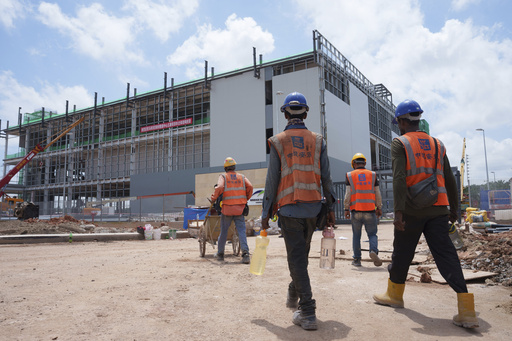
In Johor Bahru, Malaysia, Winson Lau, who operates a successful export business specializing in tropical fish, has always had backup plans for power and water outages. His business relies heavily on these resources, particularly as he raises various fish species in aquariums, including rare albino variants that can sell for thousands of dollars. While he has implemented a system to purify wastewater and an alarm to activate backup power quickly, these strategies are becoming inadequate as large data centers begin to dominate the energy landscape in Johor.
Since 2019, Johor has transformed into the fastest-growing data center hub in Southeast Asia, with expectations to have at least 1.6 gigawatts of data center capacity. These facilities are enormous, windowless structures filled with numerous computer racks, all of which require significant energy for cooling and operation. As technological advancements continue, the demand for electricity from these data centers is forecasted to exceed 5 gigawatts by 2035, potentially consuming more than half of Malaysia’s renewable energy capacity as it stood in 2023. The majority of the energy supply in Malaysia, amounting to over 95% in 2022, stemmed from fossil fuels, further complicating the energy equation.
As Malaysia looks to ramp up its renewable energy projects, including liquefied natural gas exports, there is a general sense of optimism about the energy landscape. However, Lau is skeptical about whether his business can compete effectively against foreign-backed data center giants for essential energy resources. He recalls the devastation from a power outage that resulted in the loss of 300,000 fish and a financial setback of over $1 million. If data centers ramp up operations, Lau fears the incidence of power interruptions could worsen.
In light of these challenges, Lau has decided to relocate his business to Thailand, scouting for a site for a new fish farm. He expressed concern about the impending energy crisis brought on by the rapid expansion of data centers: “Big data centers are coming, and there is a shortage of power. It’ll be crazy.”
Despite the concerns, Malaysia is betting on the economic potential that data centers could bring. Once deemed an emerging economic power in Asia, Malaysia’s industrial growth faltered post-1990s. Now, the government believes that developing data centers will not only modernize the economy but also create thousands of high-paying jobs.
However, industry experts caution that the actual job creation in data centers is significantly lower than expected. Most facilities only offer between 30 to 200 permanent jobs, according to a report from an American nonprofit. As a result, critics like Sofia Scasserra from the Transnational Institute describe the practice as a form of “digital colonialism,” likening it to historical exploitation patterns where wealth extraction leaves little behind for local populations.
In addition, only a fraction of Malaysia’s data center operations serve its local users; many are set up to cater to East Asia, Europe, and beyond, functioning under large foreign entities such as Equinix, Microsoft, and GDS Holdings. These companies have great stakes in the geopolitical AI competition, contributing to tensions over technology export regulations. Considerable uncertainty surrounds these policies, yet the stock market reacted sharply to announcements affecting major players in the sector.
The appetite for data centers continues to grow, driven by the expanding needs of artificial intelligence systems. Tech firms are seeking cheaper land options globally, as building data centers in high-cost markets like the U.S. becomes unsustainable. With its relatively low land costs, existing electricity surplus, and favorable tax conditions, Malaysia has become an attractive alternative. Reports suggest that Malaysia has seen a significant rise in data center investments, projected to position the country as one of the leaders in the regional market.
While Singapore has paused its own data center construction in response to concerns about resource strain, Malaysia has stepped in to attract investment. The province of Johor has already established a number of data centers, although many remain under construction or not yet operational. The rapid pace of development is clear, with ongoing construction evident throughout the province.
However, the long-term sustainability of these developments raises valid concerns, particularly regarding energy and water shortages. As Malaysia faces extreme weather conditions, including potential droughts, there is growing anxiety among residents about future water availability, compounded by ongoing urban development and rising demand for resources. Experts warn that sustaining large-scale data centers will pose significant challenges, particularly since such operations typically require far more resources than earlier economic models anticipated.
As the Malaysian government contemplates this energy demand, they remain hopeful about Johor becoming a central figure in Southeast Asia’s digital economy. Officials communicate a commitment to ensuring efficiency standards while enabling direct clean energy purchases for data centers. Nevertheless, as electricity demand surges, local communities are left grappling with the uncertainty of future resource availability.

